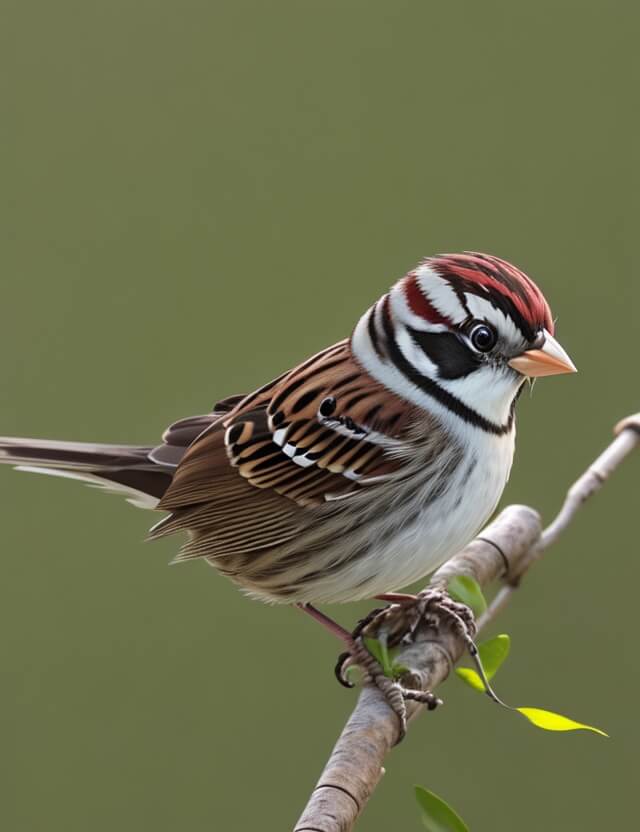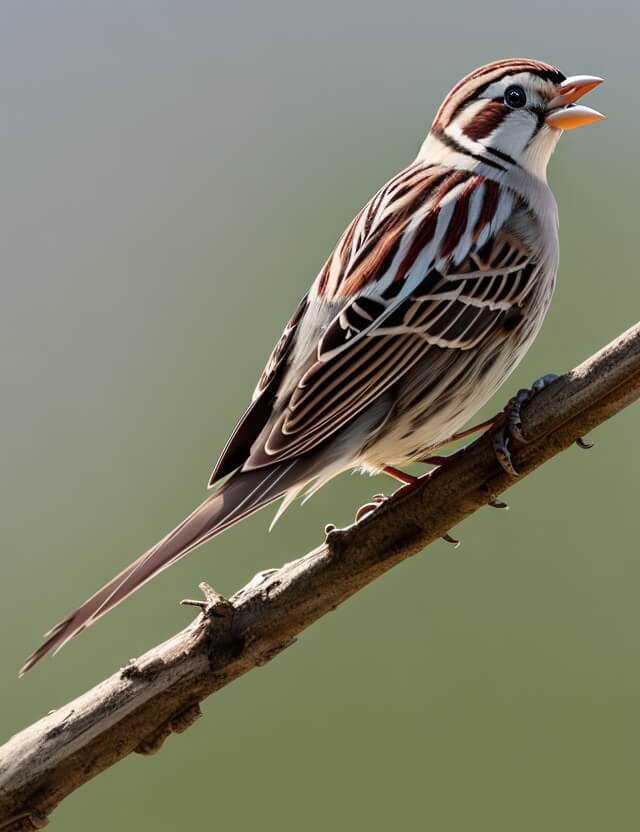What are the general characteristics of sparrow birds? Information about sparrow types, description, feeding and living habitat of sparrows.

SPARROW, any of two large groups of small songbirds that live mostly on or near the ground and are found throughout most of the temperate regions of the world. Sparrows are usually about 5 to 8 inches (13-20 cm) long and predominantly brownish and streaked. They sometimes have patches of chestnut, black, or yellow. They have conical bills adapted for eating seeds.
Birds of two very distinct families are confused under the name “sparrow.” One group, native to the Old World, are weaver finches of the family Ploceidae. The ubiquitous English, or house, sparrow and its relatives belong to this family. The other group, native to both the Old and New Worlds, make up the finch subfamily Emberizinae. The general resemblance of the North American representatives of the Emberizinae led the early European settlers in North America to call them sparrows.
True Sparrows
The “true” sparrows are native to Europe, Asia, and Africa. The typical members belong to the genus Passer, of which there are about 12 species. They usually build a rather untidy, globular nest, constructed of grass or straw, in a tree, bush, or vine. When living around houses or in rocky country, they may merely stuff a cavity with the nesting material.
The house sparrow (Passer domesticus) is a typical member of the genus. This cocky little bird lives successfully in the wild, but seems to prefer the neighborhood of man, and has been transplanted throughout the temperate regions of the world. It was introduced in North America at Brooklyn, N. Y., in 1850 and 1852 to combat the cankerworms that had become pests in shade trees. For some years the house sparrow was confined largely to the cities of the Atlantic coast, but by 1900 it had invaded the whole continent, the original few thousand having increased to millions. In the house sparrow, the grayish brown female is much duller than the male, which is chestnut on the nape and has a black bib.
Another typical member of this genus is the tree sparrow (P. montanus), which is called European tree sparrow in America to distinguish it from the unrelated native tree sparrow (Spizella arborea). P. montanus is native to Europe and Asia, where it breeds chiefly in mountainous regions, but it too was introduced in North America, and breeds in die vicinity of St. Louis, Mo. In the European tree sparrow, the sexes are alike, with a bright chestnut crown, a black bib, and a conspicuous black spot on the white cheek behind the eye.

American Sparrows
These are a much larger group than the sparrows of the genus Passer and include some closely related groups, such as the towhees and juncos, in which the pattern of the plumage is not streaked or sparrowlike. American sparrows are closely related to the buntings of the Old World and are in the same family.
The typical American sparrow is the song sparrow (Melospiza melodia), which breeds virtually throughout North America, often nesting near houses. It varies somewhat in coloration from region to region, but usually has heavy brown streaks and a large spot on the breast. A bird of brushy cover and shrubs, it is a persistent singer, with a varied song that usually starts with three identical notes. The song is delivered from an elevated perch and is one of the first heard in the spring. Even during the winter the song sparrow is heard in brief snatches of song on sunny days.
Other well-known American sparrows are the white-throated sparrow (Zonotrichia albicollis), found in the eastern United States and west to Wyoming and Montana, and its close relative the white-crowned sparrow (Z. leucophrijs), which breeds in the western United States and in northeastern Canada. These two large birds have a very pleasing pattern of gray and brown, a black crown conspicuously streaked with snow white, and a beautiful plaintive song. The white-throated sparrow differs from the white-crowned in having a dark bill, a white throat, and a yellow spot in front of the eye.
Two smaller and very dainty species, found chiefly in the eastern United States, are the chipping sparrow (Spizella passerina) and the field sparrow (S. pusilla). Both species have a chestnut crown but differ in the color of the bill, which is bright pink in the field sparrow and blackish in the chipping sparrow. The latter utters a monotonous series of short, dry notes repeated so rapidly as to be almost a trill. But the song of the field sparrow is perhaps the most beautiful of all the American sparrows, consisting of a long series of clear, piping notes that rise and fall and fade out gradually.
Other important American sparrows are the seaside sparrow (Ammospiza maritima), a drab, gray bird of the salt marshes of the Atlantic coast; the desert sparrow (Amphispiza bilineata) of the western deserts, which is unstreaked and strikingly marked with a black throat and clear breast; and the northern forest fox sparrow (Passerella iliaca), the largest of all American sparrows, with a caroling song of melodious notes. All the American sparrows build an open cup nest of grass, moss, roots, or leaves, and lay four or five eggs.